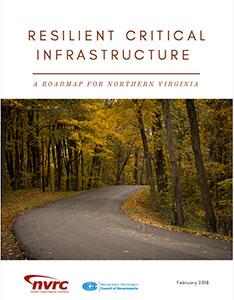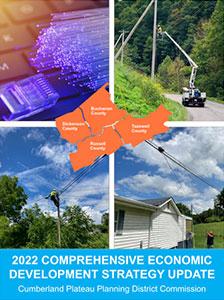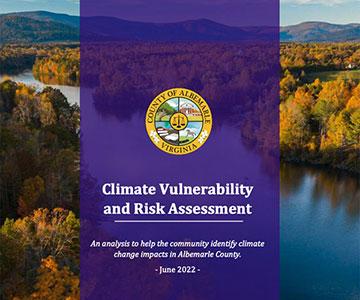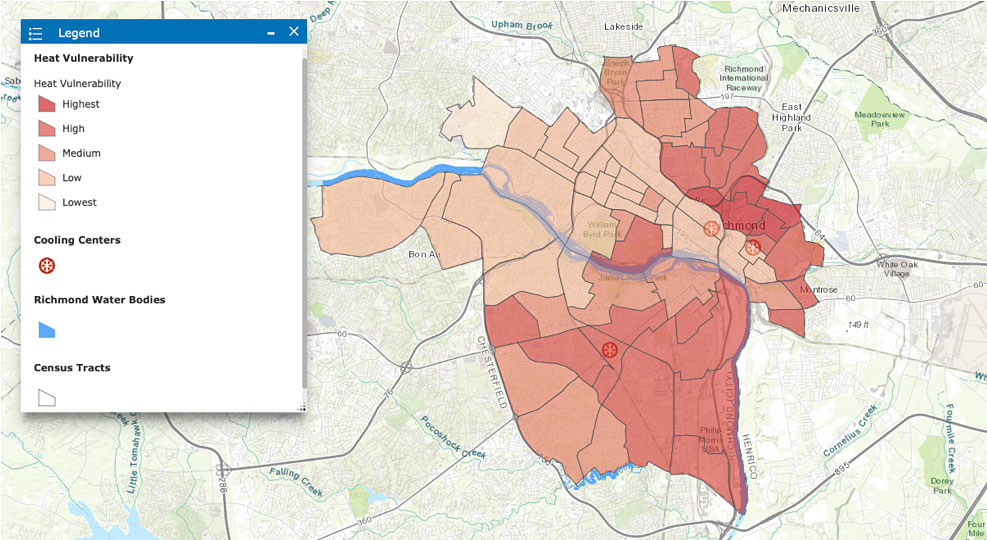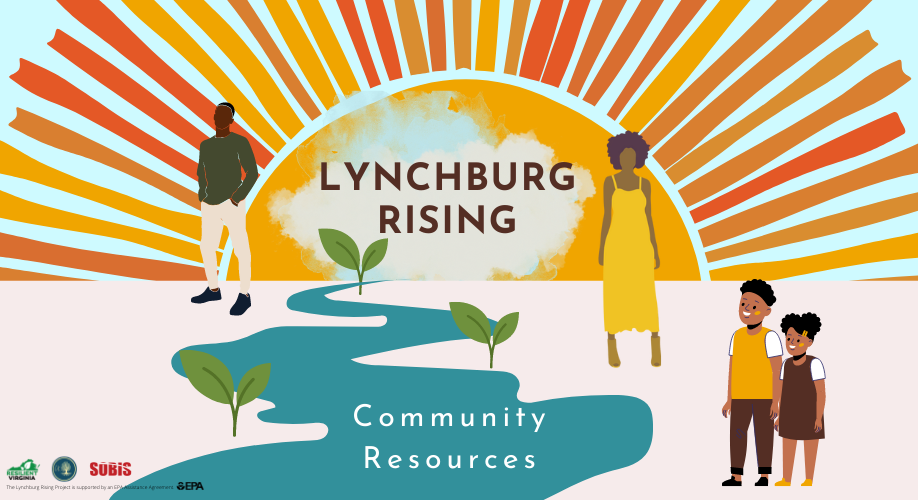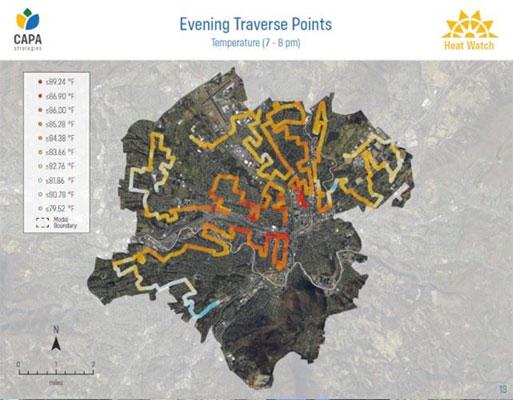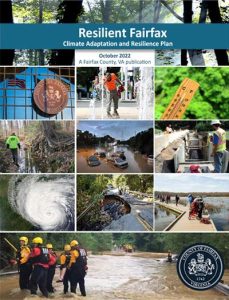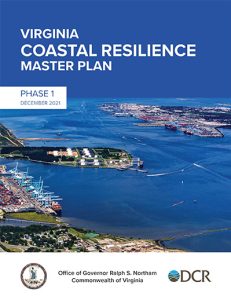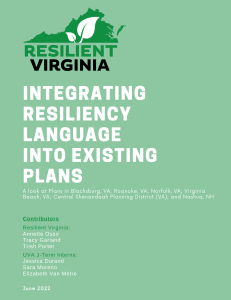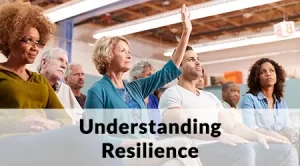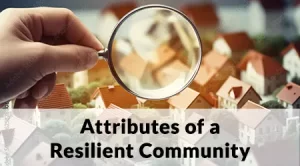Across the Commonwealth, stakeholders are working together to create strategies, policies, and programs to better adapt to climate, environmental, social, and economic challenges.
Read more.
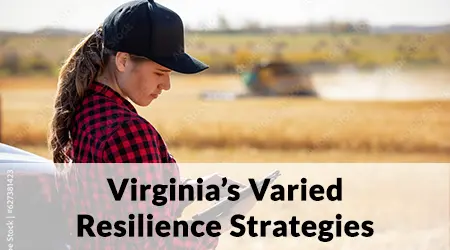
Hampton Roads
Cities in Hampton Roads have identified infrastructure adaptation, land use planning, and social equity as critical resiliency components. For example, Norfolk’s Resilience Strategy has set three basic goals: 1) Design the Coastal Community of the Future; 2) Create Economic Opportunity by Advancing Efforts to Grow Existing & New Industry Sectors; and 3) Advance Initiatives to Connect Communities, Deconcentrate Poverty, and Strengthen Neighborhoods.
Northern VA Regional Commission
The Northern Virginia Regional Commission has brought together regional cities and counties to create a “Roadmap to Resiliency” that seeks to 1) Assess risks and vulnerabilities from stormwater and floods, sea level rise, and urban heat extremes; 2) Identify critical infrastructure, including buildings, energy systems, and civil infrastructure; and 3) Develop policy directions and project databases of potential mitigation/adaptation solutions. View their Resilient Critical Infrastructure Report.
Cumberland Plateau
In rural communities, resiliency plans need to address systemic economic stressors, such as the viability of agricultural enterprises in the face of environmental, climate, and market risks; health and educational challenges; and broadband connectivity, that are major ongoing challenges. See Cumberland Plateau Planning District Commission’s Economic Development Strategy Update.
Albemarle County
In June 2022, Albemarle County published their Climate Vulnerability and Risk Assessment report. The report analyzes primary hazards the county will face in the future, who and what will be most vulnerable to the hazards, and what risks will be most likely. See Albemarle County’s Climate Vulnerability and Risk Assessment Report.
City of Richmond
Climate Equity Index
Differences in social vulnerability across Richmond mean that the city’s resilience plan didn’t work equally well for all neighborhoods. To enhance their plan, the city worked with partners to develop the Climate Equity Index to document neighborhood vulnerability to climate impacts. See Resilient Virginia’s Case Study, Mapping Social Vulnerabilities to Enhance Resilience in Richmond. Download the White Paper.
Environmental Justice Data Project
The Environmental Justice Data Project is using data and community engagement to shed light on climate justice issues and accelerate resiliency funding opportunities in the City of Richmond. See Environmental Justice Data Project.
City of Lynchburg
In Lynchburg, flood occurrences, water contamination, and extreme temperature have been identified as current hazards which, due to climate change, will likely be exacerbated. Led by Resilient Virginia, the Lynchburg Rising project engaged historically disinvested neighborhoods in the City, which are disproportionately impacted by these hazards, to better understand their risks and to develop community capacity to address them. This project built on existing sustainability and resilience work being conducted in Lynchburg.
Town of Blacksburg
When Blacksburg’s new Sustainability Manager realized that climate change is more than just sea level rise, she led her inland city toward climate resilience by developing a climate vulnerability assessment. See Resilient Virginia’s case study, An Inland City Prepares for a Changing Climate. Download the White Paper.City of Roanoke
Cities across the Commonwealth are participating in Heat Island Mapping Campaigns to better understand the needs of the community, look at the effect of heat on the built environment, and identify where expanding tree canopy would provide the greatest benefit to social and environmental conditions. See Roanoke’s Heat Island Mapping.
Fairfax County
Fairfax County is already facing serious and costly challenges due to climate change. These changes are projected to continue, amplifying vulnerabilities for community members, infrastructure, public services, and natural systems. The good news is that Fairfax County is taking action to address both the cause and the effects of climate change. A previous plan, the Community-Wide Energy and Climate Action Plan (CECAP), focused on the cause, aiming to reduce the county’s contributions to the global greenhouse gas emissions that feed into climate change. Resilient Fairfax, focuses on the effects, helping the county adapt and become more resilient to the changing conditions we experience locally. See Resilient Fairfax: Climate Adaptation and Resilience Plan.
Virginia’s Coastal Master Resiliency Plan
The Virginia Coastal Resilience Master Plan, published in December 2021, is a call to action for Virginia. With almost 6 million residents (70% of the Commonwealth’s population) residing in coastal areas, it is important that we plan for climate migration, sea level rise, flooding, and increasing severe weather patterns.


